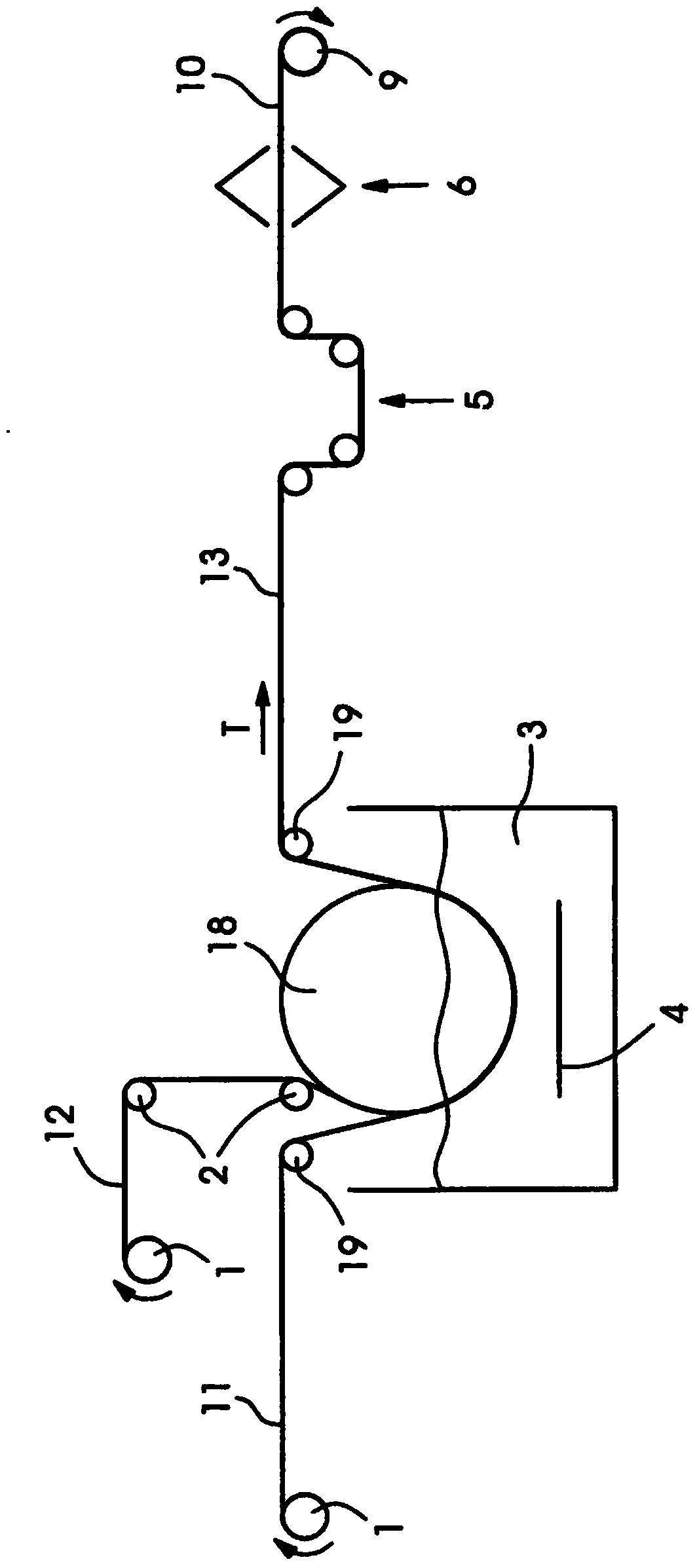Method for manufacturing a screen structure and screen structure for screen printing
A technology of screen and screen printing, applied in the field of screen structure, which can solve the problems of theoretical ink application limit and achieve high stability
- Summary
- Abstract
- Description
- Claims
- Application Information
AI Technical Summary
Problems solved by technology
Method used
Image
Examples
Embodiment Construction
[0034] Figure 4 Shown is a flat screen material 10 according to the prior art with a textile layer 11 provided on one side with a photopolymer coating 14 (direct template). In an alternative embodiment not shown, an already patterned foil can be applied to the wire mesh structure 10 (indirect template). The nickel-plated flat screen material 10 is here formed in one piece from the fabric 11 . Different fabric forms are conceivable here, which are also referred to as fabric types.
[0035] This screen material 10 can be applied in rotary screen printing: in Figure 5 A screen 17 with a planar screen material 10 in the form of a cylindrical sleeve is shown in , which is used for rotary screen printing. The wire mesh material 10 here retains its cylindrical shape by end pieces, not shown in detail. Inside the screen 17 there is an invisible squeegee of the screen printing device in order to press the ink through the screen material. The orientation of the scraper may be par...
PUM
 Login to View More
Login to View More Abstract
Description
Claims
Application Information
 Login to View More
Login to View More - R&D
- Intellectual Property
- Life Sciences
- Materials
- Tech Scout
- Unparalleled Data Quality
- Higher Quality Content
- 60% Fewer Hallucinations
Browse by: Latest US Patents, China's latest patents, Technical Efficacy Thesaurus, Application Domain, Technology Topic, Popular Technical Reports.
© 2025 PatSnap. All rights reserved.Legal|Privacy policy|Modern Slavery Act Transparency Statement|Sitemap|About US| Contact US: help@patsnap.com



